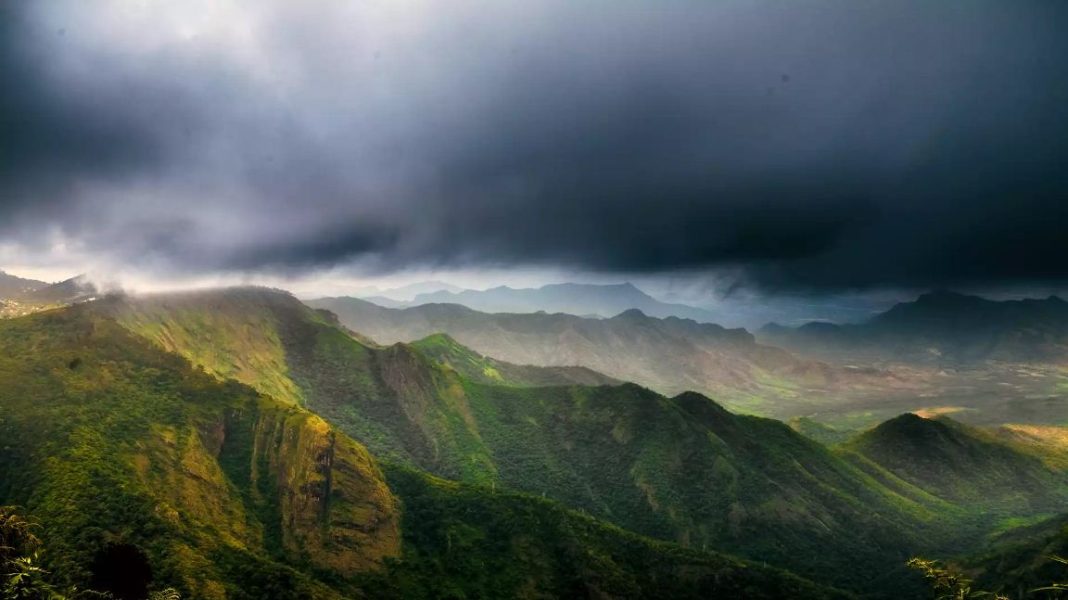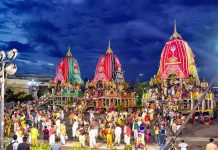Kodaikanal is a popular hill station located in the Dindigul district of Tamil Nadu. Situated in the Palani Hills of the Western Ghats, it is often referred to as the Princess of Hill Stations due to its scenic beauty and pleasant climate
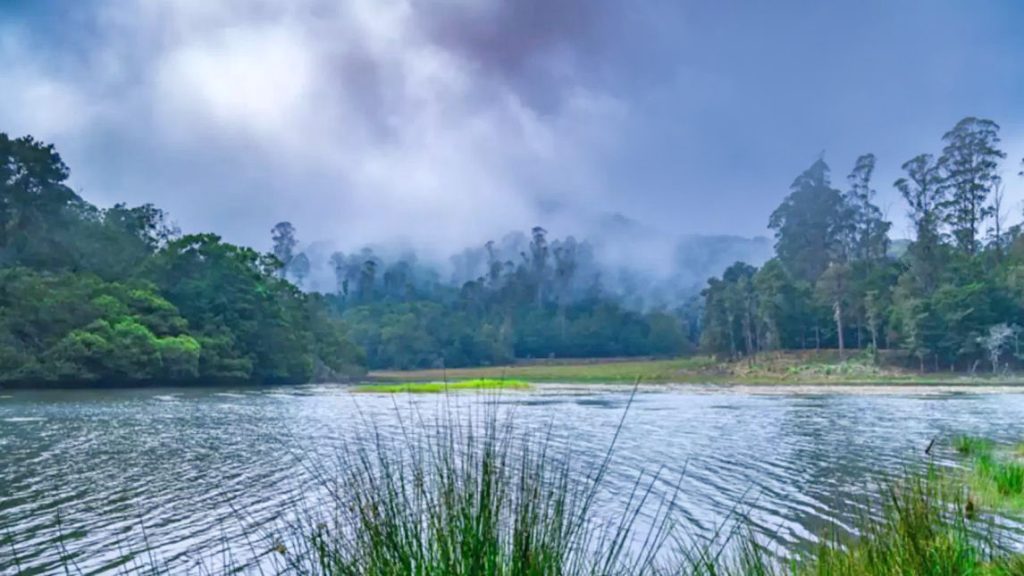

By Journey Man
Southern India, too, has a good number of hill stations. In a region where summer is almost permanent, these are places of cool and peace one can escape too.
Kodaikanal, for example, is a popular hill station located in the Dindigul district of Tamil Nadu. Situated in the Palani Hills of the Western Ghats, it is often referred to as the Princess of Hill Stations due to its scenic beauty and pleasant climate.
Kodaikanal is situated at an altitude of approximately 2,133 m (7,000 feet) above sea level, which contributes to its cool and refreshing weather.
The name Kodaikanal translates to The Gift of the Forest in the Tamil language, and the town is indeed blessed with lush greenery, dense forests, and picturesque landscapes. One of the main attractions in Kodaikanal is the Kodaikanal Lake, a man-made lake surrounded by hills and a popular spot for boating and picnicking. The town is also known for its beautiful waterfalls, such as Bear Shola Falls and Silver Cascade Falls.
Apart from its natural beauty, Kodaikanal offers several other attractions for visitors. The Coaker’s Walk is a scenic promenade along the edge of steep slopes, offering breathtaking views of the surrounding valleys and hills. Bryant Park is a well-maintained botanical garden with a wide variety of flowers, plants, and trees. The Pillar Rocks are a set of three rock formations that provide panoramic views of the valleys below.
Other notable attractions in Kodaikanal include the Dolphin’s Nose viewpoint, Green Valley View (also known as Suicide Point), Berijam Lake, and the Sacred Heart College Museum. The town is also famous for its homemade chocolates, so don’t miss the opportunity to indulge in some delicious treats while you’re there.
The good season
Kodaikanal is a popular tourist destination and attracts visitors throughout the year. However, the peak season is from April to June when the weather is pleasant and ideal for outdoor activities. The town offers a range of accommodation options, including hotels, resorts, and guesthouses, to cater to different budgets and preferences.
Overall, Kodaikanal is a wonderful place to unwind, enjoy nature’s beauty, and experience a tranquil hill station atmosphere.
Princess of Hills, Kodaikanal is one of the most sought-after hill station destinations in Tamil Nadu and the whole of India. Kodaikanal was established as a destination by British bureaucrats and Christian missionaries in the year of 1845. However, the earliest references to the stunning hill station can be found as early as the Sangam literature time. The modern era of Kodaikanal began only after the British came in. It served as a summer retreat and a vacation spot for the colonial power’s officers. Ever since those days, Kodaikanal has been a popular choice among hill station lovers for a quick escape up the mountains.
The verdant hills, the cascading waterfalls, picturesque lakes, pristine countryside – the reason why Kodaikanal has been popular among tourists are many. For a discerning traveller, the locale offers much to see, enjoy and experience. Plenty of activities await a visitor here. Boating, cycling, horse riding and trekking are some of the most common among them. One of the other spectacles of this region is the Kurinji flower that blooms only once in 12 years, making itself a unique spectacle to watch.
HISTORY
The history of Kodaikanal dates back to the early 19th century. The area was initially inhabited by the Palaiyar tribal people, who were the original inhabitants of the region. The Palaiyar tribe revered the forested hills of Kodaikanal and considered them sacred.
In 1821, Lieutenant B.S. Ward, a British officer, discovered Kodaikanal while on a hunting expedition in the area. Recognizing its potential as a hill station, he established the first European settlement in Kodaikanal. The British were attracted to the cool and pleasant climate of the region, which offered a respite from the hot and humid plains of Tamil Nadu.
During the early years of British colonization, Kodaikanal served as a retreat for British officials and missionaries seeking relief from the summer heat. The area gradually developed with the construction of roads, buildings, and infrastructure. Missionaries also played a significant role in the development of the town, establishing schools, churches, and other institutions.
In 1845, Kodaikanal was officially designated as a hill station by the British colonial government. The name Kodaikanal is believed to have been derived from the combination of two Tamil words: “kodai,” meaning forest, and “kanal,” meaning gift. This name reflects the region’s lush forests and natural beauty.
During the colonial period, Kodaikanal served as a popular summer resort and health retreat for the British. Numerous bungalows, cottages, and hotels were built to accommodate the increasing number of visitors. The town continued to develop and attract both Indian and foreign tourists over the years.
After India gained independence in 1947, Kodaikanal became a part of the state of Tamil Nadu. The hill station’s popularity continued to grow, and it became a favoured destination for tourists from all over India and abroad. The local economy thrived on tourism, agriculture, and the cultivation of various crops like fruits, vegetables, and flowers.
In recent years, Kodaikanal has faced some environmental challenges due to unchecked development and deforestation. There have been concerns about the preservation of the fragile ecosystem and the impact on the local communities. Efforts are being made to balance development with environmental conservation to ensure the sustainable growth of the town.
Today, Kodaikanal remains a popular tourist destination, known for its natural beauty, pleasant climate, and serene atmosphere. It attracts visitors with its scenic landscapes, waterfalls, lakes, and various recreational activities. The town has also become a hub for education, with several schools, colleges, and research institutions being established there.
Tourist attractions
Kodaikanal offers a wide range of tourist attractions for visitors to explore. Some of the popular tourist places in Kodaikanal include the following:
Berijam Lake
Situated in a forest conservation area, Berijam Lake is a haven for all Nature enthusiasts and wildlife lovers. If a quiet morning or evening by the lakeside surrounded by lush green woods is what you imagine as a place to unwind.
Berijam Lake is located 22 km southwest from the famous Kodaikanal Lake. It is a natural freshwater lake which you can drive down to through beautiful forest cover. A forest pass is required to reach Berijam Lake. It can be easily obtained from the District Forest Office. The quiet forest, with stunning lake views, and surrounded by acacia and pine trees, is everything you need to spend a tranquil holiday in.
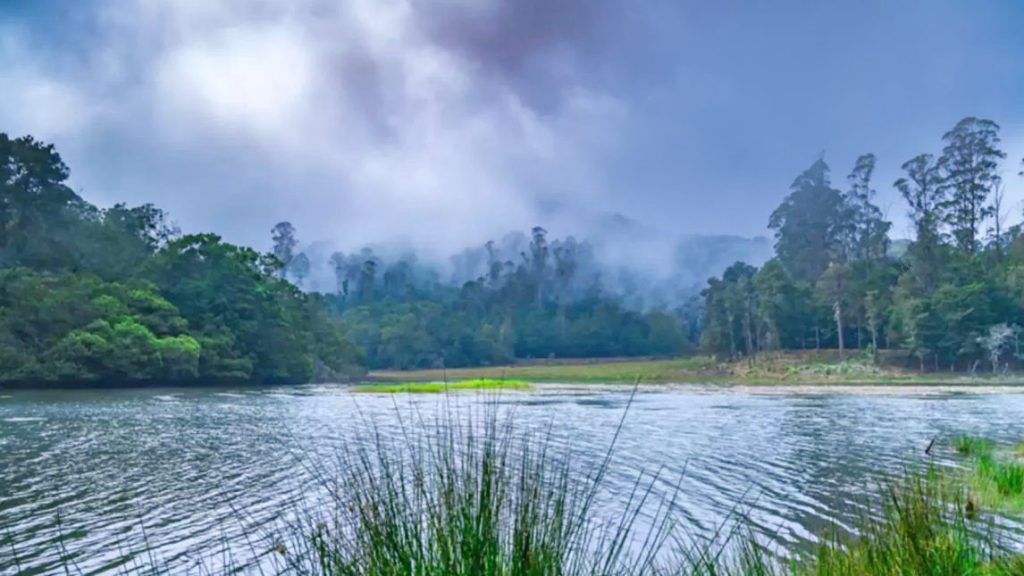

Berijam Lake is situated in the Upper Palani hills in the old site of Fort Hamilton. Carry your binoculars with you as the Upper Palani shola reserve forest is home to the crested serpent eagles, pariah kites, pale-rumped swallows and the edible-nest swiftlets. Migratory birds like common rosefinch, blue chat, leaf-warblers and blyth’s reed warblers also visit this forest.
Kodaikanal Lake
The fame of Kodaikanal lake or Kodai lake has spread across states and it has become one of the favourite photographic spots and movie locations, even in Bollywood. There are resorts and hotels available around the lake where you can sit and enjoy the tranquillity of the lake and the enticing landscape around it.
The star-shaped artificial lake, with a depth of 3 meters, was built in 1863 under the stewardship of the Collector of Madurai, Sir Vere Henry Levinge. Known as the heart of Kodaikanal, this lake has been a much sought-after location for Bollywood movies. It is an ideal place for you to unwind and get rejuvenated. People can enjoy boating in the lake, either in normal or luxury boats. There are also rowing and pedalling boats. The first boat was brought to the lake from Tuticorin. There is also a Kodaikanal Boat Club. The lake is rich in a variety of flora and fauna with different species of fish and aquatic plants. Kurinji or Strobilanthes cynthiana, which blooms once in 12 years, is found in the catchment area of Kodai Lake. Flower shows in summer are yet another attraction of the place. People cycle or go on horse rides around the lake. Tourists also have the option of taking bicycles on rent. There is ample space for parking near the lake. There are also recreational sports activities for children near the lake.
Coaker’s Walk
Coaker’s Walk is a picturesque promenade that provides stunning panoramic views of the surrounding valleys, mountains, and the town below. It is a great place to take a stroll and enjoy the breathtaking scenery.
A kilometre-long stretch or pathway is an ideal destination for sightseeing and a stroll. Tourists come here to enjoy the sunrise and the sunset. The pathway starts from Van Allen hospital and passes the vicinity of St Peter’s church. For security and safety reasons, there are fences on either side of the way. This walkway was constructed in 1872 by Lieutenant Coaker on the steep mountain slope. The Pambar River valley is situated towards the south-east side of the walkway. If the day is clear, tourists can see the Dolphin’s nose point in the south and also Periyakulam town and Madurai city from the viewpoint. If luck favours, you can see your shadow on the clouds with a rainbow halo. This phenomenon is called the Brocken spectre.
Pine Forest
An seemingly unending crop of tall, majestic pine trees, hemming you in and nuzzling you in its wild clasp, as birds chirp away in gay abandon. At the Pine Forests, one of the must-visit locales in Kodaikanal, hundreds of pine trees dot the landscape, making it an ideal spot for travellers to wander about. These forests are cloaked in a rustic charm, and walking under the canopy of these old pine trees will offer much-needed solitude for those seeking it.
Located in the south-western part of Kodaikanal, these plantations were put up a century ago. They make for an idyllic spot to listen to the whispers of Nature. A British Officer Mr H. D. Bryant has been credited with initiating the move in 1906 to grow timber.
In local parlance, there are two sets of pine forests viz. Pine Forest 1 and Pine Forest 2. While Pine Forest 1 is situated near the Solar Observatory, Pine Forest 2 is located near Moir Point.
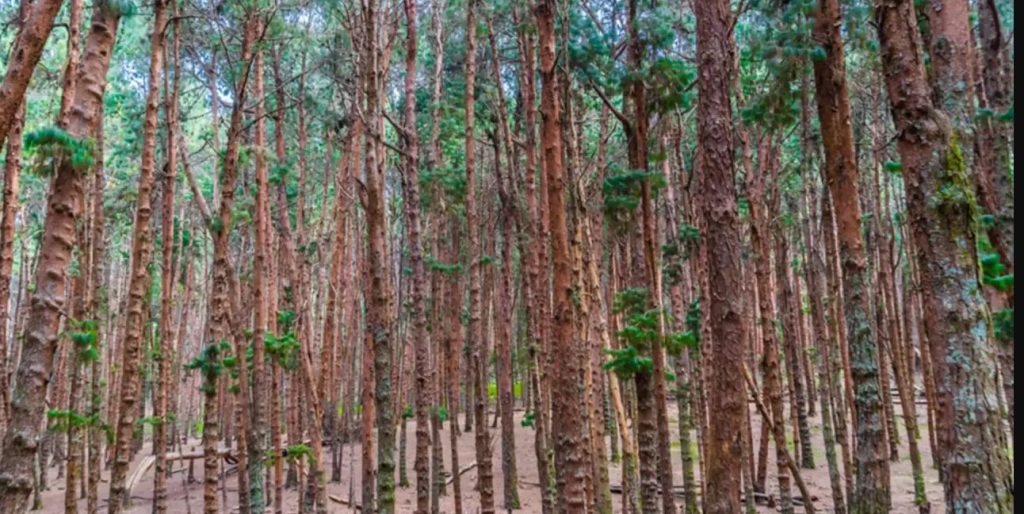

Guna caves
In Kodaikanal, the popular attraction related to caves is the Devil’s Kitchen, also known as Guna Caves or the Devil’s Punchbowl. However, it’s important to note that access to the Devil’s Kitchen has been restricted due to safety concerns, and visitors are not allowed to enter the caves.
Bryant Park
Bryant Park is a beautifully landscaped botanical garden that showcases a wide variety of flowers, hybrids, and shrubs. It also has a glasshouse, a rose garden, and a children’s play area, making it a perfect spot for a relaxing day out.
Pillar Rocks
Pillar Rocks are three massive granite rock formations standing tall at a height of around 400 feet. They offer splendid views of the surrounding valleys and are especially enchanting during misty weather.
Bear Shola Falls
Bear Shola Falls is a seasonal waterfall nestled amidst verdant forests. It cascades down from a height of approximately 40 feet, creating a tranquil and picturesque setting.
Silver Cascade Falls
Silver Cascade Falls is another popular waterfall in Kodaikanal, located on the way to Madurai. It is a beautiful sight to behold as the water gushes down from a height of around 180 feet.
Green Valley View (Suicide Point)
Green Valley View, also known as Suicide Point, offers breathtaking views of the valleys, hills, and forests below. It is an ideal spot to witness the beauty of nature.
Dolphin’s Nose
Dolphin’s Nose is a prominent viewpoint that resembles the shape of a dolphin’s nose. It provides a stunning view of the surrounding landscapes and the deep valleys below.
These are just a few of the many tourist attractions that Kodaikanal has to offer. Whether you’re seeking natural beauty, peaceful surroundings, or adventurous activities, Kodaikanal has something for everyone to enjoy.
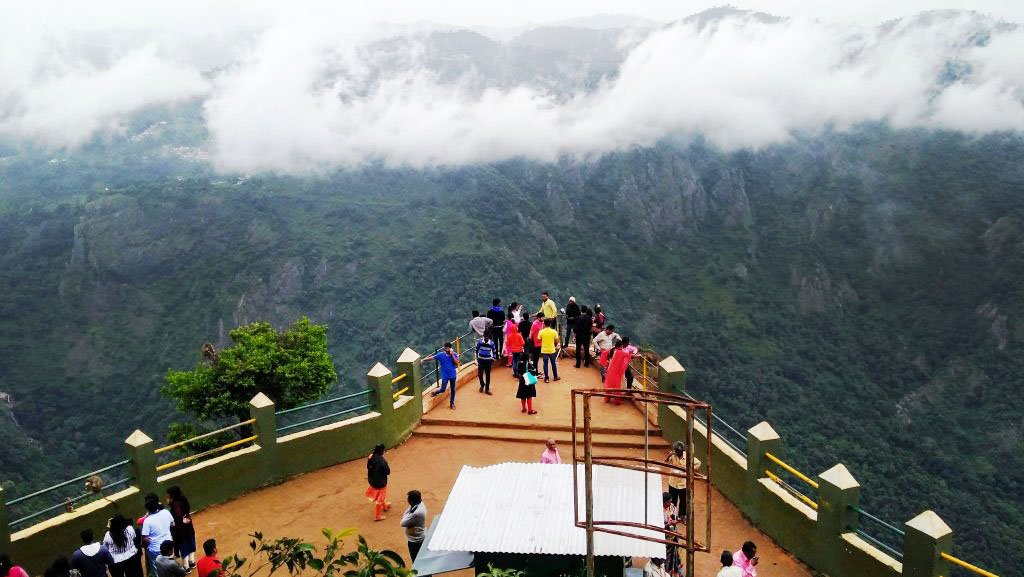

How to reach : To reach Kodaikanal from Delhi, you can consider the following transportation options:
By Air:
Fly from Delhi to Madurai: Several airlines offer direct flights from Delhi to Madurai, which is the nearest major airport to Kodaikanal.
From Madurai, you can hire a taxi or take a bus to Kodaikanal. The distance between Madurai and Kodaikanal is approximately 120 kilometers (75 miles), and the journey takes around 3 to 4 hours.
By Train:
There are no direct trains from Delhi to Kodaikanal. However, you can take a train from Delhi to Madurai or Kodai Road Railway Station, which is the nearest railhead to Kodaikanal.
From Madurai or Kodai Road, you can hire a taxi or take a bus to Kodaikanal.
By Road:
The distance between Delhi and Kodaikanal is approximately 2,250 kilometers and the journey takes around 36 to 40 hours, depending on the route and breaks taken.
You can drive your own vehicle or hire a taxi. It is recommended to plan your route in advance and consider breaking the journey at various stopovers.
Best time to visit : Kodaikanal and witness its beauty largely depends on personal preferences and the kind of experience you are seeking. However, the generally recommended time to visit Kodaikanal is during the summer and early winter months, between April and June, and September to October.
Summer (April to June): This is the peak tourist season in Kodaikanal. The weather during this time is pleasant, with temperatures ranging from 20°C to 30°C (68°F to 86°F). It is an excellent time to escape the scorching heat of the plains and enjoy the cool climate of the hill station. The flowers are in full bloom, and the landscapes are lush green.
Monsoon (July to September): Kodaikanal experiences moderate to heavy rainfall during the monsoon season. While the rain can add a certain charm to the place, it is advisable to be prepared for occasional showers and wet conditions. The misty and foggy ambiance during this time creates a serene and mystical atmosphere.
Winter (October to March): Winter in Kodaikanal is mild, with temperatures ranging from 8°C to 20°C (46°F to 68°F). It is a pleasant time to visit if you enjoy a slightly cooler climate. The weather is ideal for outdoor activities like trekking and exploring the natural beauty of the region. The winter months also witness the Neelakurinji flower blooming once every 12 years, covering the hills in a breathtaking purple hue (next expected bloom in 2030).
Where to stay: Kodaikanal offers a range of resorts for visitors looking for a comfortable stay amidst the scenic beauty of the hill station. Here are a few popular resorts near Kodaikanal:
The Tamara Kodai: starting price @ Rs 2,999Nestled in the lap of nature, The Tamara Kodai is a luxury resort that offers stunning views of the surrounding hills and valleys. The resort features spacious rooms, a multi-cuisine restaurant, a spa, and various recreational activities.
Sterling Kodai Lake:starting price @1459/Located near Kodaikanal Lake, Sterling Kodai Lake is a resort that provides comfortable accommodation and a serene environment. The resort offers well-appointed rooms, a restaurant, indoor and outdoor activities, and a beautiful garden.
Great Trails Kodaikanal by GRT Hotels: starting price @3599Set amidst lush greenery, Great Trails Kodaikanal offers comfortable rooms, a restaurant, a spa, and facilities for outdoor activities like trekking and nature walks. The resort provides a peaceful getaway with breathtaking views.

